Exploring Sound Qualities in Architectural Design

The space analysed is a closed bedroom with a square floor plan, characterised by a multitude of non-parallel surfaces. Mainly used in the evenings and mornings, this environment occupies a significant place in the daily routine, which makes it particularly interesting to observe the evolution of auditory perception.
We thought it would be interesting to compare our two auditory experiences; one from a person living in this space and one from an outsider, in order to compare a unique perspective on the influence of familiarity on auditory perception. The first impression of the space evokes a muffled sound, creating an acoustic environment in-between sterile and lush . This atmosphere contrasts with the adjacent corridor, while the only distinctive sounds come from road traffic and the heating system.
In terms of acoustics events, using speakers to listen to music reveals a lack of reverberation, creating an experience that is not sufficiently resonant. During conversations, the sound is clear, allowing a distinct understanding of the words. However, events such as a book being dropped generate vibrations that produce a deep, boomy sound. Similarly, the phone conversations of the flatmate in the adjacent room are perceived in a muffled way. The voices can be discerned, but the speech is not intelligible.
Exploring the Emotional Impact of Everyday Sounds
Perceived by Pénélope Croset
“This weekend I’ve just moved into my new flat. I’m getting to know the different rooms where I’ll be living, especially my bedroom. The first thing I notice is the deafening noise of the traffic in the street around my building. Obviously the windows are open, so I close them to make sure the noise is muffled. Fortunately, when the windows are closed, it’s as if the noise from the cars is muffled. However, another continuous sound disturbs my ear. I didn’t notice it during the day, but it was only in the evening when there was less traffic and the windows were still closed that I realised that the pipes running through my bedroom were emitting a continuous sound. It’s difficult to pinpoint the exact point of origin. It’s as if it invades the whole room. It’s the kind of sound you don’t notice until you’re paying attention, yet once you do it becomes omnipresent in the room. I thought I wasn’t going to be able to sleep because of it, but in the end the intensity was low enough that the ear got used to it very quickly and didn’t prevent me from falling asleep.”
“After spending several days in this new room, I no longer pay any attention to the noise. On the other hand, when I put my ear to it I can still hear it, but it has almost become comforting. I associate it with a place of safety, which is my bedroom. I wonder whether this noise, in another context where I wouldn’t feel as comfortable, wouldn’t have become unpleasant, even unbearable.”
Perceived by Pénélope Grégoire
“As I was coming to work on acoustics, I was immediately aware of this issue.
The corridor resonated a little, which gave the impression that the sound was filling up. We could talk and still hear each other very well.
When I entered the room, we were talking and the sound of our voices was suddenly absorbed by the geometry, the carpet,…, which gave me a direct feeling of comfort, of a smaller, cosier and more private space. This impression of entering a smaller space was contradictory to the fact that the bedroom is actually larger than the corridor.
The sound of the road came through the window in a diffuse way. This sound caught my attention immediately. During the time I was there, I was able to ignore it, but not completely. Penelope also pointed out the sound of the heating, which I couldn’t distinguish because it was mixed in with the traffic noise. I was able to separate the two sounds for a while, but soon stopped paying attention.
The difference between the flat and his bedroom in terms of acoustics really shows us the different types of needs we can have. The flat has a more functional need, whereas the bedroom is really a private space, you need to feel surrounded, and having almost no resonance gives the feeling of promiscuity.
We opened the window to ventilate and the traffic noise was more noticeable but didn’t become annoying.”
Empirical and Numerical Estimation of The Room Acoustic Properties
To estimate the reverberation time RT60 using Audacity, we chose to do it in the bedroom, in which we explored the emotional impact of the sounds.
Here in this screenshot, you have an overview of different sounds we recorded standing right next to the laptop microphone, as a test and to get more comfortable with this new software:

In this screenshot, you can see a few claps that we recorded standing 1m away from the computer’s microphone:

In this last screenshot, we zoomed in on the second clap moment to guess the reverberation time RT60 of the bedroom:

In this case: 30 [dB] decay in 0.18 [sec]
This corresponds to a reverberation time RT60 = 0.36 [sec]
Characterization of The Bedroom Acoustic Treatments
Here you can see the plan of the room:

The floor has wooden parquet:
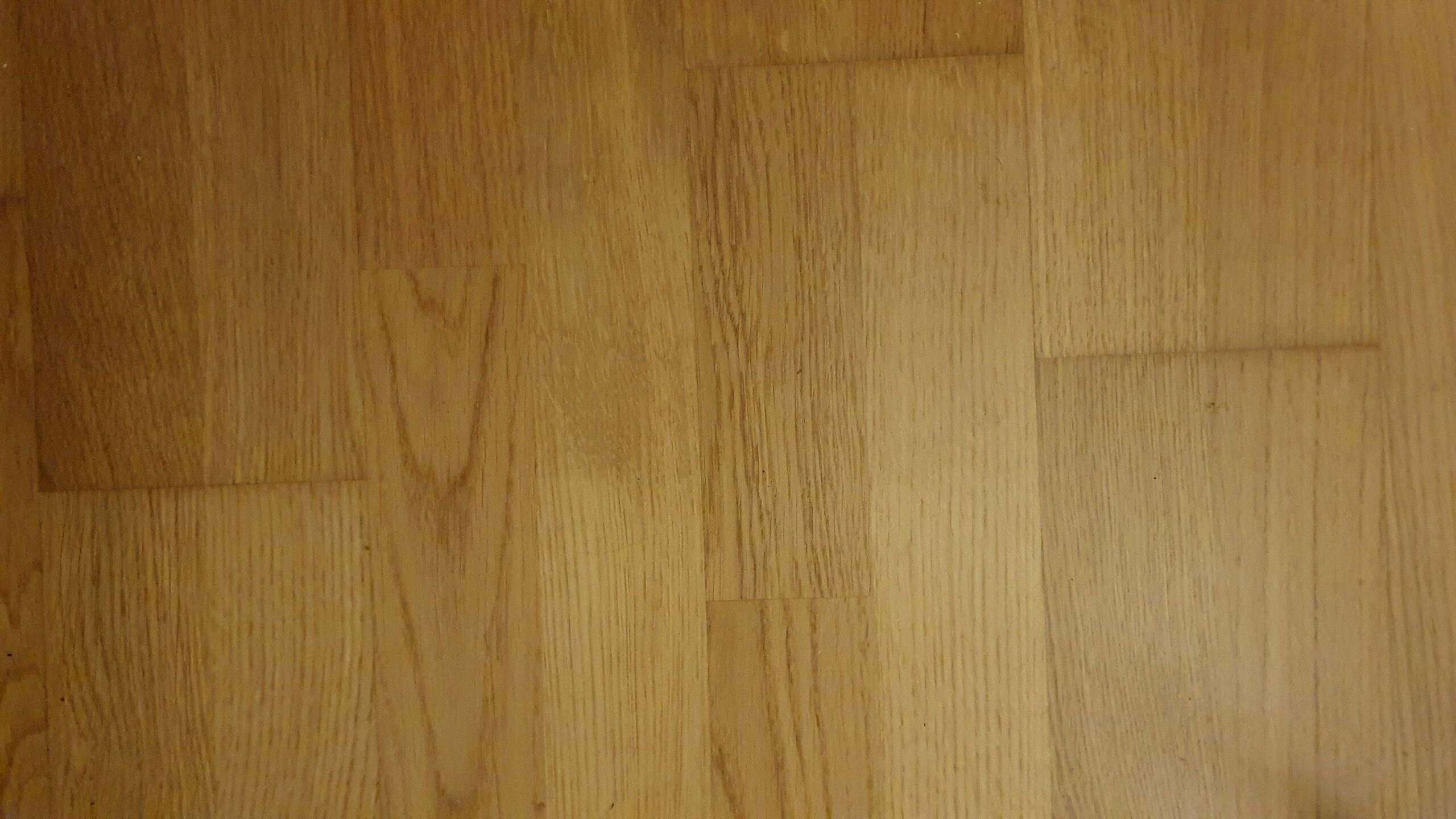
The walls are made of painted concrete:

The ceiling is also made of painted concrete:

There are three small windows with no curtains:
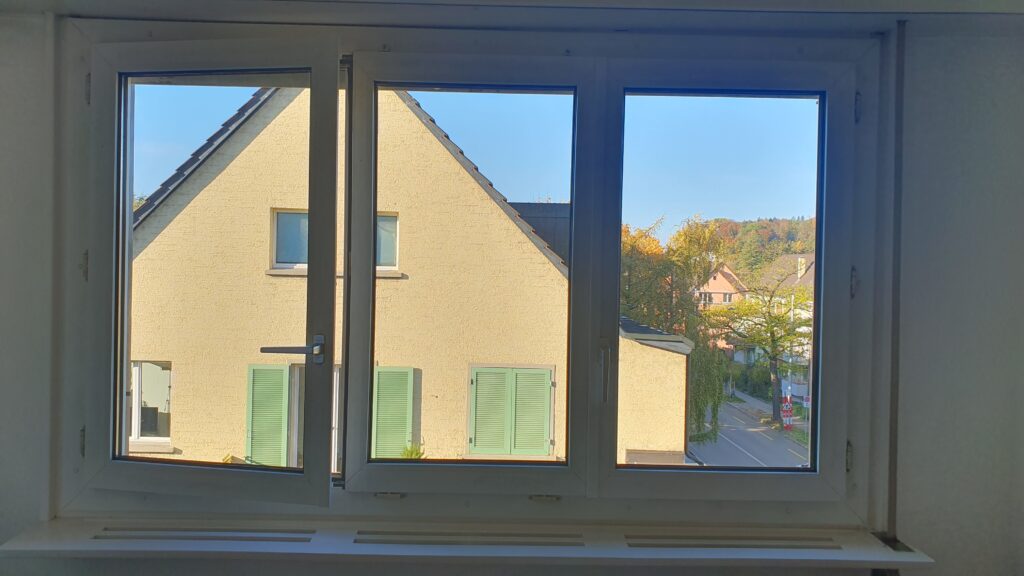
The door is made of wood:

About the geometry of the room and it’s materials:
The room is pretty basic and not so big, with an almost square shape, with parallel surfaces, except two walls that are slightly tilted. This will create some reflection, also because the walls, ceiling and floor are smooth and hard surfaces. The wall with the three small windows and the one against the bed headboard are particularly sound-reflecting compared to the others.
About the sound absorbers:
There are no sound absorbers installed in the room, apart from the added furniture. The most important and interesting furniture to note is as follows:
- Bed with bed sheets
- Rectangular carpet
- Rounded carpet
- Wooden shelf
- Wooden dresser
In this list of furniture, we can say that the bed with the bed sheets and the two carpets could be considered as absorbers. They will absorb higher frequencies. On the other side, the wooden shelf and dresser will scatter sound without much absorption, and so would favour the diffuse reflection of sound.
Sound Making
In this bedroom, there are many different objects, most of them really basic and not producing any interesting sound. But we found out that we could use one of the books as an object of study to record. We chose it because we like the sound of the paper when we turn the pages. It’s a delicate sound, a bit like the whisper of a light breeze through the leaves of a tree. It evokes the tranquillity and magic of reading in a private space. That’s why, for us, it’s a very significant object in this space, probably the most important one and also the most used one after laptops and smartphones.
Sound Walking

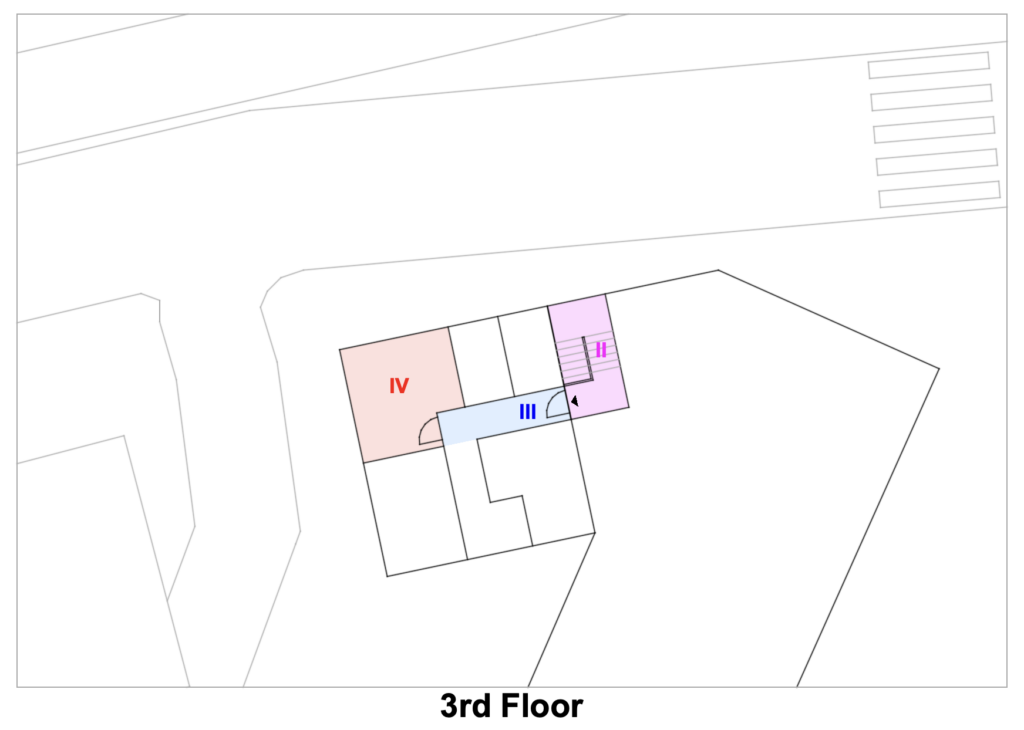
The sound walk that leads to our chosen space is sequenced in 4 different parts. The bedroom is located in an apartment on the 3rd floor of a small building having direct access to the street. We carried out this observation and analysis exercise at 6.30 pm, at the end of the day during rush hour, when people have finished work and are on their way home.
Part I :
The first part of the walk is outside of the building, on the street that leads to the entrance door. This space is particularly noisy due to the high traffic jams, especially during rush hours. There are always cars in front of the door, because of the red light, creating a constant sound of the car engine running.
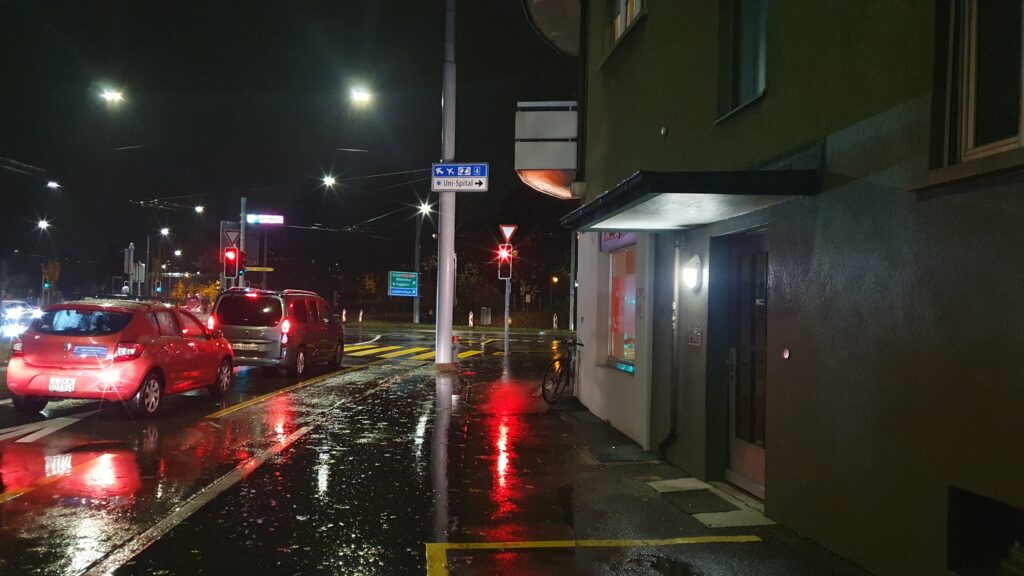
Part II :
The second part of the walk brings us inside the building, in the staircase. For us, we felt that it was an in-between outdoor and indoor space for some reason. The first one is that there is a back door leading to the outside trash area, which is open most of the time (except late at night). This open door brings some noise and also the cold from the outside. The second reason for this feeling is due to the austere ambience of the staircase. We think it’s not a cosy atmosphere like an inside space should produce. The last reason for us to say it’s an in-between space is also because of the echo in the whole three floors of the staircase. This echo unconsciously reminds us of big spaces, that don’t feel really like indoors or “cozy”.

Part III :
After walking up the stairs, we arrive on the third floor and enter the apartment. Here finally, we clearly feel being inside. The cold atmosphere from the staircase is not present anymore. The whole space, in an L shape, is really quiet and we can’t hear any sounds coming from the outside. It’s the quietest space of the apartment, due to the fact that the only windows in the corridor are on the left side and are not oriented towards the big road with all the cars.
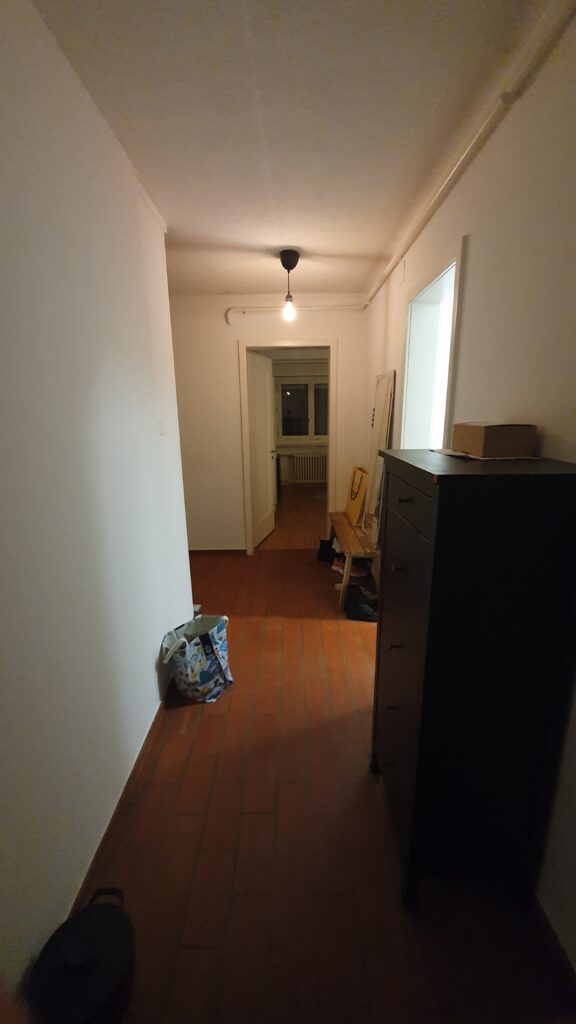
Part IV :
The final stage of our path is the bedroom, in front of the main door. This space is an inside space, but only when the windows are closed. When that’s the case, the room is really good isolated and there’s not a lot of reverberation. The two carpets bring this feeling of insideness, by absorbing the high frequencies. On the other side, whenever we open the windows, the atmosphere of the room changes and we really feel like being outside. Indeed, the windows are oriented almost towards the main road, and at any time there’s traffic. The cars and buses are heard loudly, even from the bed. But in general, this space gives a feeling of peacefulness.

Conclusion
In conclusion, we can say that the room meets the expected acoustic criteria in relation to its function. In other words, we think that the materials used and the geometry of the space should remain unchanged. The fact that the flatmate can be heard is not a problem, as it alleviates the feeling of isolation that could be felt in the bedroom. On the other hand, it would be wise to change the types of glazing and window frames to provide a better barrier against outside road noise.



